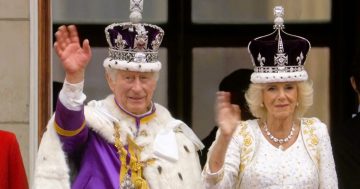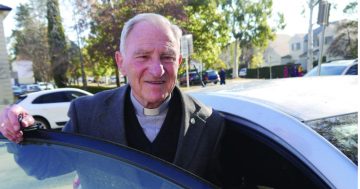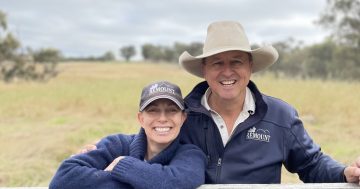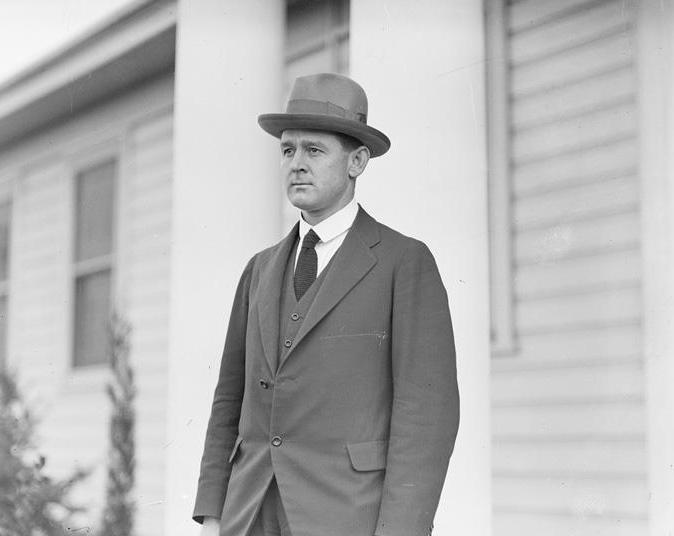
Charles Studdy Daley. His knowledge of the fledgling capital was so wide-ranging that many regarded him as ‘indispensable’. Photo: National Archives of Australia.
Some people seem to be part of everything that is happening in a community. Charles and Jessie Daley fit perfectly into that scenario in early Canberra.
Charles Studdy Daley began his career in 1905 as a clerk in the Public Works Branch of the Department of Home Affairs in Melbourne. He went on to senior roles in Canberra and had a major impact on the city’s development and community spirit up until his death in 1966.
In Melbourne, as secretary to the Director-General of Works, Daley witnessed the issues and controversies with the federal capital site selection in 1909, the international competition for the city’s design in 1911, and the many disagreements about implementing the Griffins’ plan.
He witnessed the proclamation for the site of Canberra as the seat of government in 1911 and took in the excitement and ceremony of the naming of Canberra in 1913. He helped in the planning for the establishment of the military college Duntroon, alongside General Bridges, who became the college’s first Commandant.
In 1921 Daley became secretary of the Federal Capital Advisory Committee where he attended and actively contributed to all important planning meetings. The role meant long train journeys between Melbourne and Canberra until he made Canberra home at 20 Balmain Crescent, Acton, with his wife Henrietta (Jessie) and their four young children in 1926.
Daley’s knowledge of the fledgling capital was so wide-ranging that many said he was ‘indispensable’.
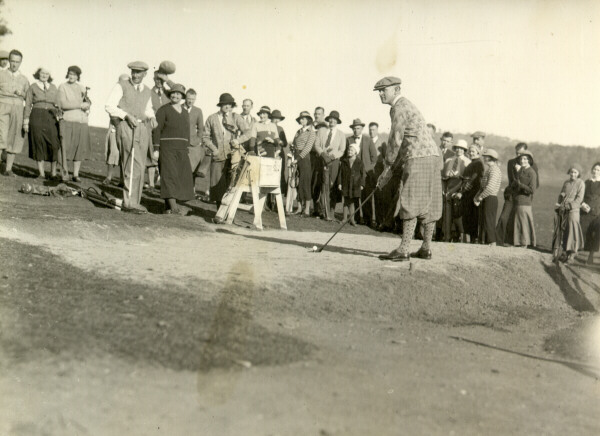
Charles Daley was involved in all aspects of Canberra life. Here he tees off at the opening of Federal Golf Links, Acton, in 1933. Photo: Libraries ACT.
He became Civic Administrator in 1930, where he remained true to the principles of the Griffin plan and fiercely defended a development ban on the city’s hills. Without his efforts, Canberra would be a very different city today.
In 1927, Daley, along with Sir John Sulman, helped plan the grand program of events for the visit of the Duke and Duchess of York and their opening of the Provisional Parliament House.
His efforts to ensure the smooth running of the day were almost spoiled when an Indian maharaja unknowingly breached protocol and attempted to place a gold chain upon the duke. Fortunately, this was quickly settled with a quiet discussion behind closed doors, and the duke carried on with scheduled investitures wearing the newly gifted gold chain. Charles Studdy Daley himself received an OBE that day.
Alongside his official duties, Daley contributed to the human heart of Canberra, believing in a community built by community. A talented musician, he created the Canberra Society of Arts and Literature, was integral to the Canberra Musical Society and played in the ‘Stomberra Quartette’. He managed local concerts produced by the Australian Broadcasting Commission and often hosted international artists in his home, including Polish-born pianist Arthur Rubenstein, German soprano Lotte Lehmann, members of the Vienna Boys Choir (the group who got trapped in Australia at the outbreak of war in 1939) and the D’Oyley Carte Opera Company.
Daley was a regular attendee at St John the Baptist Church in Reid. Well regarded for his music skills, in 1934 he was asked by the newly established St Andrew’s Presbyterian Church in Forrest if he could fill in for a few weeks until the parish could find a permanent organist. This arrangement with St Andrew’s continued for the next 18 years, all without payment.
He was involved with the Council of Canberra University College from 1930 and the ANU’s Interim Council from 1945 to 1950. He was also active in the formation of the Young Men’s Christian Association (YMCA) and the local scout movement.
Daley was hands-on, working on the big picture as well as the finer details, earning him the tag of ‘Dilly Dally Daley’.
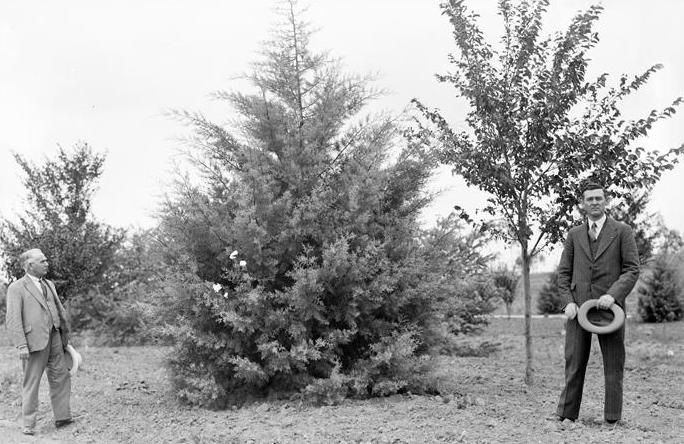
Charles Daley (right), Secretary of Federal Capital Commission, poses for a photo in Wentworth Avenue, Kingston, in 1933. Daley had his finger on the pulse of Canberra’s development, as well as its cultural activities. Photo: National Archives of Australia.
Local resident Dawn Waterhouse recalled an interaction with Daley in a 2020 Canberra Museum and Gallery (CMAG) interview, which can be viewed on the CMAG website.
Not long after World War II, young Dawn and husband Doug sought permission to build a laundry in their small new home. Doug had just returned from the US with a new modern Bendix electric washing machine.
“But where will the steam go?” Daley asked, referring to the method of that time of boiling washing. He told the couple they had to have a copper and two tubs.
“He was a stick in the mud,” Dawn laughed, but “really conscientious, honest, hardworking and all he did for Canberra was very good.” After the situation hit local headlines, the couple eventually got permission to install their modern machine in their new laundry.
Jessie Daley also contributed to Canberra’s social activities.
Along with her husband, she was involved with the Society for Arts and Literature and the Musical Society where she performed in various productions and helped backstage and with costuming. She was the first commissioner of the Girl Guides’ Association and held office roles in Canberra High School P&C, Royal Canberra Golf Club Associates and the ACT Branch of the National Council of Women. To welcome newcomers to Canberra, she would hold card afternoons and discussion groups in her home.
She played a major role in setting up the Canberra Mothercraft Society. She was also active in many women’s groups, including the Young Women’s Christian Association (YWCA), Canberra Women’s Voluntary Services, Women’s Hockey Club, and the Canberra Ladies’ Choir.
Jessie Daley succumbed to cancer in 1943.
As a way to write his memoirs, in 1964, Charles Daley started a column in The Canberra Times. His recollections provide a first-hand insight into the capital’s early development, social life and culture. Many of these recollections are contained in a publication, As I recall, Reminiscences of Early Canberra, published by Mulini Press in 1994, some of which are reflected in this article.
Charles Studdy Daley died in 1966, aged 79. He and Jessie contributed enormously to the early days of Canberra and were true ‘movers and shakers’.
Original Article published by Marg Wade on Riotact.








